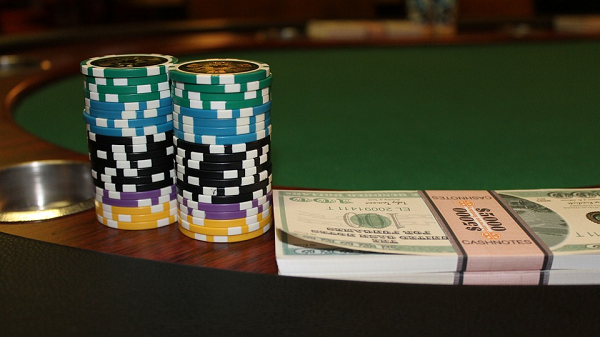The phrase “maximum and minimum boldness” refers to two very different strategies used by gamblers to give themselves the best chance of doubling their money on a bet.
Learning the difference between maximum and minimum boldness is important, even if you aren’t planning on using these strategies on your next visit to the casino. Understanding these tactics will teach you everything you need to know about negative and positive expectation bets, a major aspect of casino gambling.
The Basics of Maximum Boldness
The goal of the maximum boldness strategy is to double your money in a single wager. This tactic only makes sense in a negative expectation game – one in which the house has an advantage.
Take the game of roulette, for instance. Your best opportunity for doubling your money is to wager everything on one of the even-money wagers (the ones that pay out 1:1) and say a quick prayer. If you put your chips on black, you have about a 48% chance of winning and therefore doubling your money.
If you attempt to double your money in roulette by placing a number of small wagers across the board, you have a very slim chance of pulling it off. Remember, all negative expectation casino games have a house edge that applies constantly over time. That means each time the wheel spins, and each time you bet, your chances of doubling up are reduced.
The Basics of Minimum Boldness
What are you to do if you’re playing a positive expectation game? That’s where the Minimum Boldness plan comes into effect.
Imagine you’re playing blackjack according to perfect strategy AND you’re counting cards. The house edge on this game, thanks to your card-counting skill and handy strategy chart, is actually -0.5, meaning over time the house stands to lose. Rather than placing one or two large bets, you’re better off placing as many bets as possible in a denomination as low as is permitted by the game’s rules. This is Minimum Boldness.
It’s simple – when the casino has the advantage, it is in their interest that you place as many small wagers as possible. That lets them take their cut (the house edge) out of each of your smaller wagers.
On the other hand, when you’ve got the casino by the throat (like you do in the example blackjack game above) they’d prefer you take big risks and potentially lose your bankroll rather than milk them for those tiny percentages over time.
With a minimum boldness strategy, your best chance of doubling your cash (when you have an advantage against the house) is to wager as little as possible as many times as you can. The basics of the minimum boldness strategy is probably why casinos have bet minimums in place.
How Maximum Boldness Works
The maximum boldness tactic is one of many strategies designed to counter the house edge.
Any gambling strategy you read about, whether it’s a classic Martingale or even a complex card-counting system, is designed to put a dent in the casino’s advantage.
Using maximum boldness in negative expectation casino games is like buying in bulk at a warehouse – your goal is to get the best overall price on oatmeal by buying as much of it as you can at once.
Check out this example of how maximum boldness can be applied to casino gambling:
Imagine you’re playing an imaginary casino game that gives you a 49 percent chance of winning and a 51 percent of losing. Under those rules, the house has a 2 percent advantage.
For the sake of simplicity, say your bankroll is $1,000 and your win goal is also $1,000. If you wager your $1,000 on a single even-money bet, your chance of hitting your overall goal of $1,000 of winnings is 49 percent.
Adding any number of bets will diminish your overall chances of winning. For instance, if you attempted to win that $1,000 by placing two back-to-back $500 winning bets, your odds of hitting your $1,000 goal are now just 24 percent. Other means of increasing your $1,000 bankroll by another grand exist, but none with odds as high as 49 percent.
By “doing or dying” on a single wager, you actually stand the best possible chance of hitting your target goal of $1,000 in winnings.
How Minimum Boldness Works
Using maximum boldness tactics is far more common than minimum boldness. That’s because minimum boldness requires an edge against the house, something that’s not all that common in the casino.
Here’s how minimum boldness works in a casino setting.
Let’s say you have a bankroll of $1,000, and you want to win $1,000 more. You find a table game that gives you a 51 percent chance of winning and a 49 percent chance of losing. The goal here is to minimize the risk to your bankroll for each outcome – if you wager $1,000, you have a pretty good chance of doubling your money, but the risk to your bankroll is a bit too high considering you have the advantage. So what do you do?
It’s safer to win your $1,000 over time (by milking the slight advantage you have over the casino) than risk your entire stake on a single outcome.
The minimum boldness strategy is what makes the house money when they offer negative expectation games – in other words, most casino games. They’d rather win small percentages over time than risk handing out big payouts for accepting large bets. Using this strategy in positive expectation situations turns the tables on the house. Instead of giving them a 49% chance (and a one-time shot) at taking your stake, bleed the money and comps out of them little by little.
Conclusion
Maximum and minimum boldness are at two ends of a spectrum. They require different in-game circumstances and represent two different but related gambling strategies. Learning about these methods will give you much-needed insight into house casino advantage and betting styles work.

 MENU
MENU















